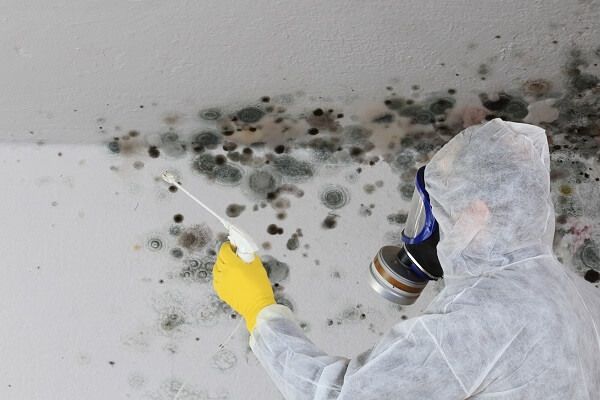Mold is a common household issue, but not all mold types are created equal. One of the most infamous types is black mold, known for its potential health risks.
But how does black mold differ from regular mold? In this article, we’ll break down the main differences in simple terms, helping you recognize and address these unwelcome houseguests.
Understanding the differences between black mold vs regular mold can be beneficial and potentially even life-saving. So let’s jump right in, shall we?
Color Distinction
The first and most obvious difference between the two is their color. Black mold, also known as Stachybotrys chartarum, appears dark green or black in color. On the other hand, regular mold can come in various colors, such as green, gray, brown, or white.
Despite its name, not all molds that appear black are actually the infamous Stachybotrys chartarum. This is why it’s crucial to understand other key differences between the two mold types.
Texture
Black mold has a slimy or greasy texture, while regular molds tend to have a powdery or furry appearance. This slippery texture of black mold is due to its production of mycotoxins, a toxic substance that can have adverse effects on human health.
Location of Growth
Another distinction between the two mold types is their preferred growing environments. Black mold thrives in areas with constant moisture, such as leaking pipes, humid basements, or poorly ventilated bathrooms.
On the other hand, regular molds can grow in a wider range of conditions. They may appear on food, paper products, or even outdoor surfaces.
Health Concerns
Speaking of health, this is where the main difference between black mold and regular mold lies. While both types can potentially cause allergies and respiratory issues, it’s the presence of mycotoxins in black mold that sets it apart.
Exposure to mycotoxins can lead to severe symptoms such as coughing, wheezing, chest tightness, and even neurological problems. That’s why it’s important to identify and address a black mold infestation promptly and effectively.
While regular mold can cause health issues, it’s typically not as harmful as black mold. Common symptoms include stuffy noses, itchy eyes, and skin irritation.

Mold Remediation
In both cases, it’s crucial to handle mold infestations promptly and effectively. While regular molds can sometimes be removed with DIY methods, black mold should be handled by a professional.
There are commercial janitorial services that specialize in mold remediation and have the equipment and expertise to handle black mold safely. They can also identify the source of moisture causing the mold growth and help prevent future infestations.
Black Mold vs Regular Mold: Final Thoughts and Essential Takeaways
Understanding the differences between black mold and regular mold is key to ensuring a safe living environment. Always be vigilant for any signs of mold, especially in damp areas of your home.
If you find mold, especially black mold, don’t hesitate to call in professional help. Remember, when it comes to mold, it’s better to be safe than sorry.




